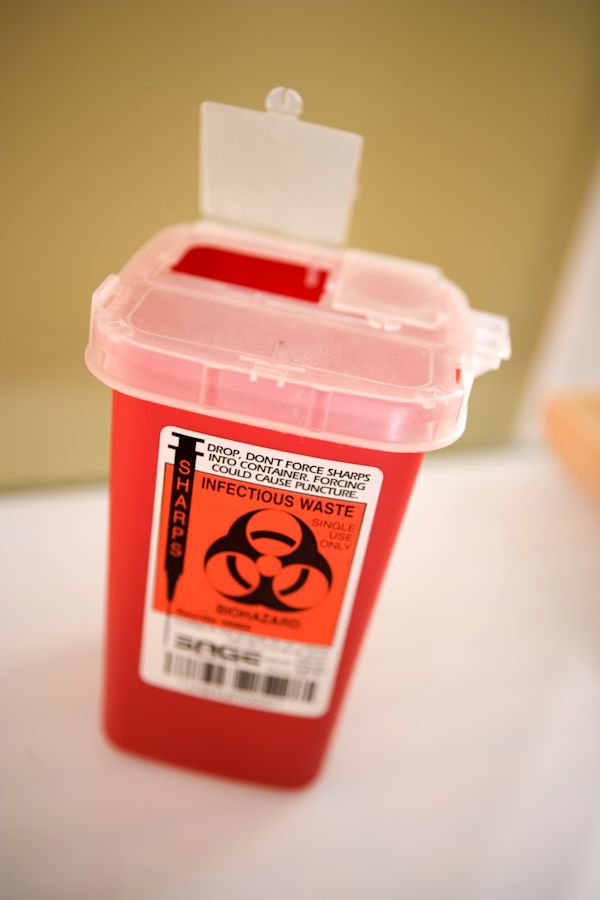Sharps Injuries
- Contaminated needles and other contaminated sharps must be discarded immediately or as soon as feasible into appropriate containers.
- Sharps containers must be located close to the area where sharps are used or could be found.

Needles must be disposed of properly.
- Contaminated needles and other contaminated sharps must not be bent, recapped, or removed. Shearing or breaking contaminated needles is prohibited.
- Employers must make sure hand washing facilities are readily accessible and require employees to wash their hands immediately or as soon as feasible after removal of gloves or other personal protective equipment.
- Hands must be washed with an appropriate soap and water, whenever there has been occupational exposure to blood or OPIM. If a sink is not readily accessible (e.g., in the field) in instances where there has been occupational exposure, hands may be decontaminated with hand cleanser or towelette, but must be washed with soap and running water as soon as feasible.
- If there has been no occupational exposure to blood or OPIM, use of an appropriate antiseptic hand cleanser is acceptable.
Contaminated needles and other contaminated sharps must not be bent, recapped, or removed.
For more information on bloodborne pathogens in the healthcare setting, please see OSHAcademy course 656 Bloodborne Pathogens in the Healthcare Setting.
Knowledge Check Choose the best answer for the question.
1-7. Where should sharps containers be located?
You forgot to answer the question!
